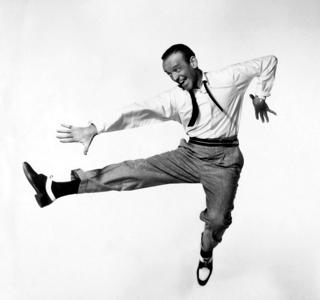This is the first in a two part post on preparing to lead a service.
 Image: Public Domain
Image: Public Domain
The Purpose of Corporate Worship
The importance of the weekly worship service in the life of the local church can barely be overstated. Not only is it regularly commanded by scripture, but non-attendance by members is often one of the first ‘signs’ that things are not going well in the life of that believer. So if it is important that we all meet together and worship God, surely how we do so is also important? After all, we must have some coherency and unity in what is going on otherwise the whole thing will go awry.
Have you ever seen a dance movie? (I haven’t…) but imagine that there is one kid in the dance troupe whose synchronisation is completely off. They are so out of rhythm and touch with everyone else that they end up ruining the whole thing. That’s what church would be like without structure. Which is exactly what Paul the Apostle says (although he didn’t have the poetic flair to suggest a wayward dancer). In 1 Corinthians 14, Paul says that ‘everything should be done in a fitting and orderly way,’ (v. 40) because ‘God is a God not of disorder, but of peace.’ (v. 33)
The service leader has a lot of responsibility in first organising the various elements of required worship, and then in putting together the service in such a way as to best harmonise the music and prayers to direct the hearts of the congregation to prepare for the feeding of the sermon.
Thus it is vital that the service leader (or leaders) understand the purpose of the Sunday worship service, how the elements can fit together in order to guide the congregation to humble and prepare their hearts for the sermon.
What are these elements? Well, throughout the New Testament we see a number of things commanded for public and corporate worship. We don’t have the First Jerusalem Calvary Church service sheet, so we have to piece together the expectations and commands from the various letters and books in the New Testament.
The Elements of Corporate Worship
In 1 Corinthians 14, Paul says that we should sing hymns, hear a word of instruction or revelation or tongue or an interpretation. All of these ‘must be done for the strengthening of the church.’ (v. 26) As for singing, Paul commanded the Ephesians to ‘speak to one another with psalms, hymns and spiritual songs.’
Elsewhere, James commands ‘confess your sins to each other’ (James 5:5), and to ‘pray for each other’ as an act of love and obedience.
####The Structure of Corporate Worship
#####The Call In our own church context, we tend to start with an exhortation – or call – to worship. This is usually a short extract that reminds us of the theme of the service and calls us to prepare our hearts for worship. An example of the Call to Worship could be Isaiah 12:4-6:
4 And you will say in that day:
“Give thanks to the LORD,
call upon his name,
make known his deeds among the peoples,
proclaim that his name is exalted.
5 “Sing praises to the LORD, for he has done gloriously;
let this be made known in all the earth.
6 Shout, and sing for joy, O inhabitant of Zion,
for great in your midst is the Holy One of Israel.”
This call to worship acts as a buffer from the ‘business’ of announcements and the ‘hubbub’ of activity before the service begins. It does what it says: it calls the congregation to prepare to worship.
There is nothing in the Bible to demand that we begin our service with a call to worship, so far as I know, but it is interesting to note that Psalm 95 is titled ‘A Call to Worship and Obedience.’ Nevertheless, calling the congregation to worship is certainly a helpful action.
The Music
This is a very contentious issue, and I am not about to delve into the fray. However (see me delve into the fray!) as a Reformed Christian, I believe that the leadership of the church has a solemn duty to ensure the music is as Biblical and helpful as possible.
The music is however, more often than not, a distraction. And it is the single most difficult issue in most churches because it is so conditionally determined. What one guy likes (electro-punk with R ‘n’ B jazz) will completely clash with what another guy likes (Japanese canine opera). Trying to harmonise these differences is like trying to make a cat act like a dog. It is both unrealistic and not the best use of anyone’s time.
Music is there to serve the congregation in singing. It is not to bring about an emotional high or low that distracts us from the proclamation of God’s Word during the sermon. If the Holy Spirit moves individuals to tears during the praise time, that’s fantastic! But the purpose of the musicianship is to aid the edification of the congregation, not manipulate and cajole them into a frenzy.
Beyond that, however, it is wise to have a balanced mixture of old hymns, psalms and modern praise music. This ensures a healthy balance that will not satisfy any one preference, yet will not unfairly satisfy only one style either. This is a good and fair use of the leadership’s discretion to minimize discontent with the music.
Remember, the music is not to be an emotional blackmail. Nor does it function as a replacement for the sermon. It allows the congregation to prepare for the sermon by encouraging each other with glorious truths of God’s character, nature, and goodness.
Editor’s Note: There will be more in-depth discussion on music and song choosing in future posts. You can read the second half here.